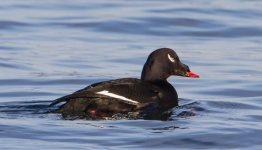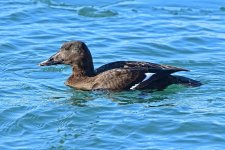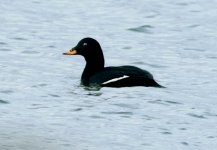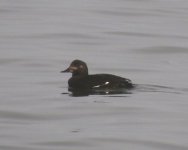Xelioszzapporro!!
Well-known member

Another duck identification thread. This time we have Scoters. The Melanitta Deglandi which apparently is called White-winged Scoter and the Melanitta Fusca which is called Velvet Scoter even though it also has white in it's wings....
So I can't really tell them apart. Neither male with male....nor female with female.....I only know that the Melanitta Deglandi dwells in North America while Melanitta Fusca dwells in Europe.....if somebody knows how can I tell the physical difference between the males in appearance and the physical difference between the females in appearance then please let me know it would be very helpful to me!!!
So this is the male and female Melanitta Deglandi (white-winged Scoter)


And this is the male and female Melanitta Fusca (Velvet Scoter)


@Bewick @Joern Lehmhus @qwerty5 @aeshna5 @Jeff Hopkins @Stephen Dunstan @jurek @Southern Viking @TheBlackGrouse @nartreb @foresttwitcher @Earnest lad @Welsh Peregrine @THE_FERN
So I can't really tell them apart. Neither male with male....nor female with female.....I only know that the Melanitta Deglandi dwells in North America while Melanitta Fusca dwells in Europe.....if somebody knows how can I tell the physical difference between the males in appearance and the physical difference between the females in appearance then please let me know it would be very helpful to me!!!
So this is the male and female Melanitta Deglandi (white-winged Scoter)


And this is the male and female Melanitta Fusca (Velvet Scoter)


@Bewick @Joern Lehmhus @qwerty5 @aeshna5 @Jeff Hopkins @Stephen Dunstan @jurek @Southern Viking @TheBlackGrouse @nartreb @foresttwitcher @Earnest lad @Welsh Peregrine @THE_FERN




